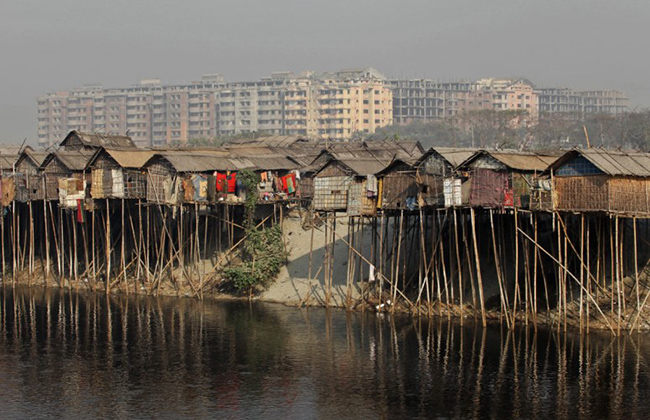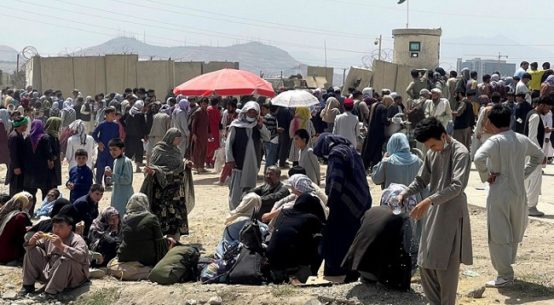
Although 13 biodiversity hotspots in Bangladesh have been declared Ecologically Critical Areas (ECA) by the government, very few steps have been taken on the ground to protect them.
While some steps were taken to protect five of those 13, the government violated its own rules in one of the ECAs — the Sundarbans — to allow for the construction of industries that threaten the area’s ecology.
The government has so far declared Saint Martin’s and Sonadia islands, Sundarbans, Cox’s Bazar, Tanguar Haor (wetland), Hakaluki Haor (wetland), Marjat Baor (wetland), Gulshan-Baridhara Lake and the capital’s surrounding four rivers — Buriganga, Shitalaksha, Turag and Balu — and the Piyain River in the northeastern district of Sylhet as ECAs under the ECA rule in 1999 formulated in support of the Bangladesh Environment Act.
According to the ECA rule, any kind of development work that threatens the existence of biodiversity and ecology is strictly prohibited in the ECAs.
So far, the Cox’s Bazar sea beach, Sonadia Island, Saint Martin’s Island, Tanguar Haor and Hakaluki Haor have seen some conservation initiatives under different projects initiated by the government and nongovernment organizations.
“Since formulating the ECA rules, we have been trying to manage the critical areas; however, in some cases, we have failed to manage them properly due to lack of funds and inadequate staff,” said Md Rafiqul Islam, deputy director of the environment department who takes care of the ECAs.
The department has completed preparatory work to declare another important biodiversity hotspot, Halda River, an ECA, to conserve the breeding place of Asian carp.
Bangladesh houses 170 million people in only 147,000 square kilometers (56,760 square miles), while its economy has been growing consistently above 5% for the last three decades, leaving a massive impact on its environment and biodiversity.
The Sundarbans
An industrial belt and a 1,320-MW coal-fired thermal power plant have been set up in a 10-km (6-mi) area on the outer periphery of the Sundarbans Forest, which was earlier declared an ECA.
Moreover, in 2017, the government amended the definition of hazardous industries in its Environment Conservation Act to effectively legalize around 24 liquefied petroleum gas (LPG) factories set up in the Sundarbans periphery.
Those LPG industries were identified as “Red Category” factories in the earlier Bangladesh Environment Conservation Act, 1995 (amended in 2010).
As a result of the amendment, they are now exempt from meeting eight conditions, including an environmental impact assessment (EIA), to establish their venture.
The Ministry of Environment, Forest and Climate Change published a notice stating that the LPG bottling plant and LPG cylinder plant, along with solar plants and biofertilizer factories, will be considered as “Green Category” industries.
Green groups have repeatedly expressed concern about the government’s unwillingness to conserve the ECAs.
“It is very clear that the government has changed the definition to accommodate the hazardous industries in the critical ecosystem of the mangrove forest Sundarbans,” said Syeda Rizwana Hasan, executive director of the Bangladesh Environmental Lawyers Association (BELA).
No respite for the four rivers surrounding the capital
According to Dhaka Water Supply and Sewerage Authority (Dhaka Wasa), around 5.1 million people living along the Buriganga riverbank daily generate around 380 million liters (100.4 million gallons) of liquid waste — both household and industrial.
In the last two decades, the government has implemented several projects, including relocating the tannery zone from the bank of Buriganga River, to save the river. However, the water quality, as well as the biodiversity of the water body, remain in a sorry state.
The environment department has declared that the quality of Buriganga River water is below acceptable standards.
Md Ziaul Haque, environment department director, said they have failed to keep pollution under control and blamed lack of coordination among different government agencies, lack of awareness among people and unscrupulous industry owners.
Existing ECAs in Bangladesh
1. Sundarbans, the single largest mangrove forest on earth, which is also a Ramsar site
2. Cox’s Bazar sea beach, 152 km (94.4 mi) long, the single largest sea beach on earth
3. Saint Martin’s Island, habitat of rare types of coral reef
4. Sonadia Island, which serves as breeding ground of marine turtles
5. Tanguar Haor, a marshland and important natural habitat for mother fish breeding, which is also a Ramsar site
6. Hakaluki Haor, a marshland that is very important for mother fish breeding and swamp forest
7. Buriganga, Turag, Balu and Shitalaksha — the four rivers surrounding the country’s capital city, Dhaka
8. Gulshan Baridhara Lake, situated in the heart of the capital city
9. Marjat Baor, a marshland, which is also very important as a breeding place of mother fish stock
10. Piyain River at Jaflong
(This article is republished from Mongabay under Creative Commons License)
Abu Siddique is Mongabay’s Contributing Editor for Bangladesh. He has worked for several of the leading national dailies including Dhaka Tribune, Daily Sun and The Business Standard, and has explored the remotest corners of the country in search of stories.


